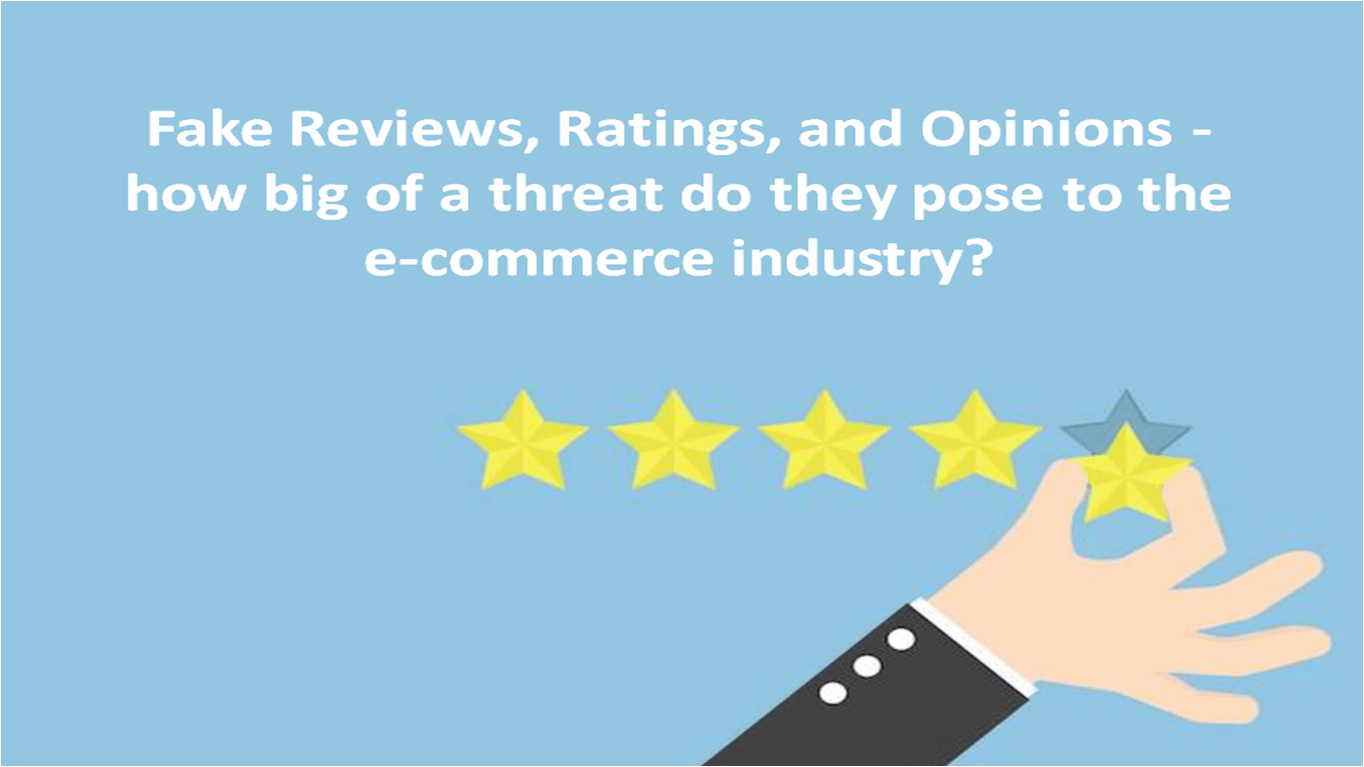Fake Reviews, Ratings, and Opinions - how big of a threat do they pose to the e-commerce industry?

source: own elaboration
Consumers increasingly make purchasing decisions based on opinions, reviews and ratings found on the Internet. They become a factor more important even than the price - because we are more likely to buy products that are appreciated by Internet users, even if they are more expensive than those offered by competitors. Along with the constant increase in the value of the e-commerce industry, the frauds associated with issuing false opinions, ratings and reviews are also gaining in importance.
What are fake reviews, ratings, and opinions?
According to CHEQ, a well-known anti-fraud provider, fake reviews can be defined as ‘any positive, neutral, or negative review that is not an actual consumer’s honest and impartial opinion and does not reflect a genuine experience of a product, service, or business.’ In our opinion, however, even correctly issued reviews are rarely unbiased, because everyone has their own subjective tastes and preferences, and shopping experiences often evoke emotional reactions. Simplifying, it can be said that false ratings, opinions and reviews are all ratings, opinions and reviews issued by people or automated programs (BOTs) that don’t arise as a result of using a given product or service subject to assessment, regardless of whether they are positive or negative. It is also worth adding that the rating is usually assigning a numerical value (for example, from 1 to 5 stars), reviews are most often subjective comments about a given product or service, while the review is the most extensive and includes a more detailed discussion of individual aspects of the product or service. For the purposes of this text, however, these terms will sometimes be used interchangeably as a whole category that includes reviews, opinions and ratings.
Why are the ratings and opinions issued by internet users so important?
As research shows, almost 9 out of 10 consumers (89%) worldwide look for reviews on the Internet about a desired product or service before making a final purchase decision. This is a significant increase compared to the situation 8 years ago - then it was about 82% of consumers. It is worth mentioning that this doesn’t only apply to online stores - we often check opinions also before shopping at stationary points. With reviews so important and e-commerce revenues reaching a global value of over $ 4 trillion, frauds related to issuing false ratings and reviews have become a very serious threat for companies selling online.
How are false reviews and ratings issued?
False opinions and ratings are a scam that is very easy to carry out - on a small scale, dishonest competitors can act on this subject themselves - exposing them from various accounts and devices. Of course, if they want to strengthen their position compared to other companies - they will give themselves positive opinions, but they can also influence the rating of their competitors by adding negative opinions about them. However, more and more often we are dealing with similar activities of a mass nature. They can be done through appropriate BOTs, i.e., automated programs designed to issue false reviews in various forms. Another way is to use websites that associate users from around the world who give false ratings and/or opinions on their own devices. Internet users „hired” by such sites earn from 25 cents to as much as $ 100 for each activity of this type (depending on the product, the difficulty of rating and credibility of the user). There are also private groups on social media that offer refunds, rewards or compensation for rating or reviewing a product you have purchased. Of course, opinions issued in this way must be in accordance with the wishes of the award founder.
Where can you find product and service reviews on the web?
We find ratings, opinions and reviews on the Internet at every step - starting with ratings in search results in browsers, through large shopping platforms such as Amazon, or in Poland - Allegro, price comparison websites (such as Ceneo), specialized websites devoted to a given topic (websites about sports, fashion, automotive, etc.), to websites that exist mainly to provide feedback on certain products and services - such as TripAdvisor.
How do well known brands fight false reviews and ratings?
Amazon’s regulations prohibit sellers from offering any reward for reviews. The company reportedly analyzes 10 million reviews a month to stop abuse. Similarly, Yelp, which constantly monitors the opinions appearing in it - as of December 31, 2020, about 8% of them were removed by the website administrators. In a transparency report released to the public this year, TrustPilot revealed that 5.7% of the reviews - so more than 2.2 million - were removed because they were found to be fraudulent.
We should remember, however, that even the most sophisticated algorithms for detecting fraud in this area may turn out to be helpless if we are talking about issuing ratings (understood as a numerical value), not opinions or reviews. In addition, website owners are often not able to determine whether the person who issued the reviews actually used a given product or service (even if they made a purchase, they didn’t have to use the product or the service) and how they did it (for example, if they read the manual). Even detecting fake reviews left by BOTs is not easy - automatic programs designed to carry out this type of fraud are more and more technologically advanced and perfectly impersonate a human being.
So, realistically, only a small part of the false reviews, ratings and opinions are caught and removed.
Which industries are particularly vulnerable to losses due to false opinions and evaluations?
Of course, the problem applies to all products and services sold online. As research shows, however, it brings the greatest losses in the Travel industry, because it is in this case that consumers rely on the opinions of others the most. Other industries in which frauds related to false opinions, ratings and reviews may be particularly important are electronics, furniture and household goods, fashion and entertainment, and luxury goods.

